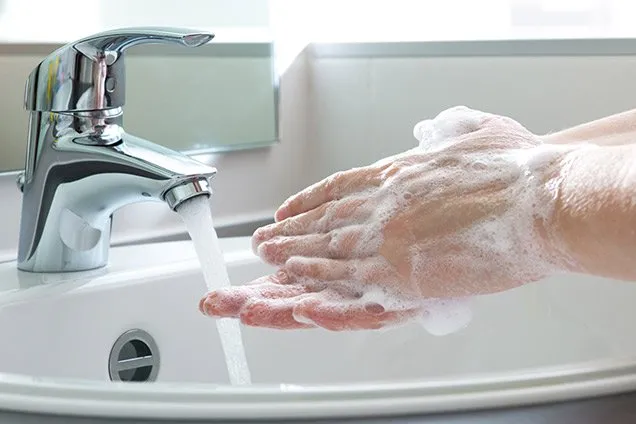Maintaining a clean environment is crucial for caregivers, whether they are working in hospitals, nursing homes, or providing in-home care. Infection prevention is a vital aspect of caregiving, and it begins with proper cleaning techniques. For those providing in-home care, http://abetterwayinhomecare.com offers valuable guidance and support. This article will explore various strategies to help caregivers minimize the risk of infections, ensuring the safety and well-being of their patients.
The Importance of Regular Cleaning
Cleaning is the first line of defense against infection. Regular cleaning reduces the number of pathogens present in the environment, lowering the chances of infection transmission.
High-Touch Surfaces
High-touch surfaces such as doorknobs, light switches, and handrails are breeding grounds for germs. Caregivers should clean these surfaces multiple times a day with appropriate disinfectants.
Proper Use of Disinfectants
Using disinfectants correctly is key to effective infection control. Caregivers must follow the instructions on the disinfectant label to ensure that surfaces are adequately sanitized.
Hand Hygiene: The Cornerstone of Infection Prevention
Hand hygiene is perhaps the most critical component of infection prevention. Caregivers should be diligent about washing their hands frequently and thoroughly.
When to Wash Hands
Caregivers should wash their hands:
- Before and after patient contact
- After touching any potentially contaminated surface
- Before eating or preparing food
- After using the restroom
Proper Handwashing Technique
To effectively remove germs, caregivers should:
- Use soap and water
- Scrub all parts of the hands, including the back of the hands, between the fingers, and under the nails
- Wash for at least 20 seconds
Personal Protective Equipment (PPE)
Personal Protective Equipment (PPE) is essential for protecting both caregivers and patients from infection.
Types of PPE
Caregivers should use appropriate PPE based on the level of risk, including:
- Gloves
- Masks
- Gowns
- Face shields
Correct Usage and Disposal
Using PPE correctly and disposing of it safely is crucial. Caregivers must follow protocols for donning and doffing PPE to avoid contamination.
Environmental Cleaning and Disinfection
Environmental cleaning involves maintaining a clean and sanitary living space for patients. This includes both routine cleaning and thorough disinfection of all areas.
Routine Cleaning
Routine cleaning tasks such as dusting, vacuuming, and mopping should be performed regularly to prevent the buildup of dirt and germs.
Deep Cleaning
Deep cleaning involves more intensive cleaning tasks, such as disinfecting all surfaces, laundering bedding, and sanitizing bathroom fixtures. This should be done on a weekly basis or as needed.
Specialized Cleaning Services
Sometimes, the demands of caregiving make it challenging to keep up with cleaning tasks. In such cases, hiring a professional cleaning service can be beneficial.
Benefits of Professional Cleaning Services
Professional cleaning services have the expertise and equipment to perform thorough cleaning and disinfection, ensuring a safer environment for patients. For exceptional service, you can always contact oasis natural cleaning, known for its comprehensive and effective cleaning solutions.
Did you know that UV light can be used to kill germs? Hospitals and other healthcare facilities often use UV light as an additional method of disinfection. It’s a powerful tool that can eliminate bacteria and viruses that regular cleaning might miss.
Effective Waste Management
Proper waste management is critical in infection control. Caregivers must ensure that all waste, especially medical waste, is disposed of safely.
Handling Medical Waste
Medical waste, such as used needles and bandages, should be placed in designated containers and disposed of according to local regulations to prevent contamination.
Laundry Hygiene
Clean laundry is another important aspect of infection prevention. Caregivers should handle soiled laundry carefully to avoid spreading germs.
Best Practices for Laundry
- Wear gloves when handling soiled laundry
- Wash items at the highest temperature suitable for the fabric
- Use appropriate disinfectants and detergents
Did you know that your cell phone can harbor more germs than a toilet seat? Caregivers should regularly clean and disinfect their phones to prevent the spread of infections.
A Clean Environment is a Safe Environment
Infection prevention is a multifaceted approach that involves regular cleaning, proper hand hygiene, the use of PPE, and effective waste management. By following these guidelines, caregivers can create a safer environment for their patients and themselves.
Maintaining a clean environment is not only about using the right products but also about being consistent and diligent in your cleaning routines. Remember, the health and safety of your patients depend on the cleanliness of their surroundings. Stay vigilant, stay clean, and keep your patients safe.



